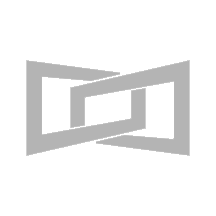数字化单一市场观察:《版权指令》第13条之分析
原标题
DSM Watch: Navigating Article 13 of the Copyright Directive
作 者
Alastair Shaw, Penny Thornton, Winston Maxwell, Morten Petersenn, Alberto Bellan, Anne Schmitt and Benedikt Lüthge
(本文最初于2019年3月22日发表)
2019年2月13日,欧盟委员会、欧洲议会和欧盟理事会终于就期待已久的《版权指令(COM(2016)593)》草案(“《指令》”)达成一致。接下来将于2019年3月26日在欧洲议会对草案进行表决。在这一决定性表决进行之前,数字化单一市场观察(DSM Watch)从倍受争议的第13条入手,对各方达成一致的《指令》语言进行深入分析(该分析基于欧盟理事会于2019年2月20日公布的暂定文本内容)。
On 13 February 2019 the Commission, the European Parliament and the Council finally agreed the text of the long-awaited draft Copyright Directive* (COM(2016)593) (“Directive“). The next step will be a vote in the EU Parliament on the agreed text on 26 March 2019. Ahead of that decisive vote, DSM Watch takes a deeper dive into the agreed language of the Directive, starting with the much debated Article 13 (This analysis is based upon the text which was presented and provisionally agreed by the Council on 20 February 2019).
01
第13条包含什么内容?
What is Article 13?
欧盟委员会称第13条旨在“加强创作者和权利人就[许可]事宜进行协商,并就某些提供用户上传内容服务的提供商使用其内容的行为收取报酬的权利”。
The Commission’s stated aim of Article 13 is to “reinforce the position of creators and right holders to negotiate [a licence] and get remunerated for the use of their content by certain user-uploaded content services”.
如果在线内容共享服务提供商提供由用户上传的受版权保护的内容,根据第13条的规定,该行为被视为为向公众传播或向公众公开该该内容的行为,因此必须获得权利人授权(例如通过订立许可协议)。这一规定使得一些在线服务提供商在与用户行为相关的版权侵权中承担主要法律责任,因此,成为《指令》中饱受争议的一个方面。
When an online content-sharing service provider gives access to copyright-protected content uploaded by its users, Article 13 provides that it performs an act of communication to the public or an act of making available to the public and those acts must be authorised by the rightholder (e.g. by concluding a licensing agreement). This has been a controversial and heavily debated aspect of the Directive because it makes some online services primarily liable for copyright infringement in relation to the acts of their users.
虽然在线内容共享服务提供商被要求与权利人订立许可协议或者获得权利人授权,但是《指令》也明确表明,权利人有权拒绝给予授权。第13条中的这一规定由于限制了网络自由而受到批评,因为如果权利人拒绝就特定作品授予许可,除非内容共享服务提供商满足下文中的四步标准,否则将不可避免地承担侵权责任。
While the online content sharing services are urged to conclude licensing agreements with right holders or get their authorisation, it is expressly stated that rightholders are free to refuse to grant authorisation. This aspect of Article 13 has been criticised for curtailing the freedom of the internet because if rightholders do not grant a licence for specific works infringement liability cannot be avoided unless the content sharing service can meet the 4-step criteria set out below.
在在线内容共享服务提供商获得授权的情况下,授权范围将涵盖该服务商用户“不以商业为目的”或“不产生重大收入”的使用受版权保护的内容的行为。但上下文并未指出何为“重大”收入。界定值是多少?月收入仅几百欧元的小型媒体影响人是否算在内?还是只包括以该等活动为生的群体?
Where authorisation has also been obtained it will cover the acts carried out by a service’s users when they are “not acting on a commercial basis” or when their “activity does not generate significant revenues” It is not clear what “significant” revenues means in this context. Where is the threshold? Would small influencers generating only a couple of hundred Euros per month be covered, or only those who make a living from their activity?
02
涉及哪些主体?
Who is caught?
《指令》第2条第5款对“在线内容共享服务提供商”的定义为“主要目的或主要目的之一是储存、提供由其用户上传的大量受版权保护的作品,且为营利目的组织和推广前述内容的在线服务提供者” 。简言之,我们将此类服务称为“内容共享服务”。
Article 2(5) defines an “online content sharing service provider” as an online service “whose main or one of the main purposes is to store and give the public access to a large amount of copyright protected works […] uploaded by its users which it organises and promotes for profit-making purposes.” For ease, we shall refer to such a service as a “content sharing service“.
《指令》序言的第37b条规定,关于“大量”一词的判断视具体情况而定,取决于一系列未详尽列出的标准(例如受众规模和上传的受版权保护的文件的数量)。定义明确排除了非营利性在线百科全书(例如维基百科);非营利性科教资料库;开源软件开发共享平台(例如GitHub)、互联网服务提供商(ISPs)、网络市场、B2B和个人云服务。但是,论坛(发布评论)或交友平台(发布图片)也有可能被归为这一类。
Recital 37b states that the assessment of what amounts to a “large amount” must be made on a case-by-case basis, depending on a non-exhaustive list of criteria (e.g. audience size and amount of copyright-protected files uploaded). Explicitly excluded from the definition are not-for-profit online encyclopedias (e.g. Wikipedia); not-for-profit educational and scientific repositories; open-source software developing and sharing platforms (e.g. GitHub), ISPs, online marketplaces, B2B and personal cloud services. However, discussion forums (hosting comments) or dating platforms (hosting pictures) could arguably be covered by the definition.
既然没有界定值,那么就有可能说无论获利多少,只要获利,平台运营商就可被归到这一定义下。个人运营的供用户分享图片的小平台,即便是在广告收入难以维系运营的情况下也和大型平台受到几乎同等的对待。为解决这一问题,《指令》针对初创企业制定了较为宽容的责任机制(见下文)。
Since there is no threshold, it could be argued that any profits made by the platform operator could be sufficient to make it fall within the scope of the definition regardless of the amount. A small platform operated by one person which allows its users to share their pictures and which generates through advertising barely enough revenues to be self-sufficient is treated much the same as the most popular platforms out there. To deal with this, the Directive includes a lighter regime for start-ups (see further below).
03
未经许可的内容:四步责任限制机制
Unlicensed Content: the four-step limitation of liability regime
内容共享服务提供商当下得益于《电子商务指令》(2000/31/EC号指令)第14条第1款下的避风港机制,该条款规定:如果服务提供商(a)不知道存储内容不合法且(b)在被通知(告知和删除要求)后立即删除有问题的内容,则不对存储的内容承担责任。
Content sharing services currently benefit from the safe harbour regime under Article 14(1) of the e-Commerce Directive (Directive 2000/31/EC), which provides that service providers are not liable for the content they store if they (a) have no knowledge of the illegal nature of the content they store, and (b) act expeditiously to remove the flagged content upon notification (notice and take-down).
但是,就第13条中所述的行为(向公众提供其用户上传的受版权保护的作品)而言,内容共享服务提供商不能靠避风港机制免责(第13条第3款)。第13条中所述的机制将适用于该等行为。
However, content sharing services cannot rely on the safe harbour regime in relation to the acts covered by Article 13 (i.e. giving the public access to copyright protected works uploaded by users) (Article 13(3)). Instead, the regime set out in Article 13 will apply to such acts.
第13条第4款提供了内容共享服务商可就用户非法上传的内容免除责任的普适准则。内容共享服务提供商必须能够证明其已充分遵守如下四步流程:
A generally applicable regime for avoiding liability for content unlawfully uploaded by their users is set out in Article 13(4). Content sharing services must be able to demonstrate they are fully compliant with a 4-step process:
第一步:其已尽最大努力获取权利人授权;以及
第二步:其已“按照专业尽职的较高行业标准”尽最大努力确保权利人指明的特定作品不被提供给公众;且在任何情况下
第三步:其均已立即执行通知和删除要求;以及
第四步:其已“按照专业尽职的较高行业标准”尽最大努力防止已经被通知和删除的内容今后不会被上传。
Step 1: they have made best efforts to obtain an authorisation from the right holders; and
Step 2: they have made “in accordance with high industry standards of professional diligence” best efforts to ensure the unavailability of specific works identified by rightholders; and in any event
Step 3: they have executed notice and take down requests expeditiously; and
Step 4: they have made best efforts “in accordance with high industry standards of professional diligence” to prevent the future upload of content which has been the subject of a notice and take down request (i.e. notice and “stay” down).
如果未对作品做出相关许可,则权利人必须向内容共享服务提供商提供必要信息以指明相应作品,同时提交具有充分依据的删除要求。否则,内容共享服务提供商将不就其提供该作品给公众的行为承担责任(第13条第4款和序言第38b条第9项)。
Where there is no licence in place for a work, rightholders must supply content sharing services with the necessary information to identify the work and submit sufficiently substantiated take down requests. If they don’t, the content sharing service will not be liable for the availability of that work on its service (Article 13(4) and Recital 38b, §9).
04
何谓“尽最大努力”?
Meaning of “best efforts”
这一机制的一个核心要素是“尽最大努力”这个概念,具体而言则是“按照专业尽职的较高行业标准尽最大努力”("best efforts in accordance with high industry standards of professional diligence")的概念。对后者进行评估时,就第二步和第四步(确保作品不提供给公众)而言,序言明确说明,需考虑“尽到一个勤勉的运营商为防止未经授权的作品在其网站上出现而采取的所有措施”。还应考虑由于各相关因素及发展而产生的业内最佳作法和措施有效性,以及相适应的总体原则。对于步骤的有效性,应考虑许多因素,包括类型、受众和服务规模、现有手段的发展状况以及服务提供商的成本等。步骤应当有效,但无需超出为避免作品被公开所需采取的必要措施。
A central element of the regime is the concept of best efforts, or more specifically “best efforts in accordance with high industry standards of professional diligence”. In making an assessment of the latter, for the purposes of steps 2 and 4 (ensuring unavailability of works), the recitals make clear that account should be taken of “all the steps that would be taken by a diligent operator to achieve the result of preventing the availability of unauthorised works […] on its website”. Account should be taken of best industry practices and the effectiveness of the steps taken in light of all relevant factors and developments, as well as the overall principle of proportionality. When considering the effectiveness of any steps, a number of factors should be taken into account including the type, the audience and size of the service, the evolving state of the art of existing means and the costs for service providers. Any steps should be effective but not go beyond what is necessary to avoid the availability of works.
这些标准是为了给责任机制留出了调整的空间,以根据每个内容共享服务的具体情况适当作出应变。但是,由于(潜在)需要考虑的因素众多,却很可能对如何实施步骤产生困惑。
These criteria are supposed to allow for a finely-tuned mitigation of liability regime, properly adapted to the concrete situation of each content sharing service. However, with so many factors to (potentially) consider confusion on how to implement the steps is highly likely. Recital 39(b) does state however that, as soon as possible after the Directive comes into force, the Commission should organise dialogues with stakeholders to define best practices with regard to the appropriate industry standards of professional diligence. Some guidance should therefore be provided in time.
尚不明确上述标准是否还关系到评判第一步获取许可时“尽最大努力”所应达到的程度。因此,什么是内容共享服务提供商必须采取的措施这一点仍有疑问。内容共享服务提供商是否不得不采取力所能及的一切行动以获取许可?又应该向谁获取?内容共享服务提供商如何确定应就哪些内容获取许可以及向哪位权利人获取许可?这是否取决于类型、受众和服务规模?答案绝非显而易见。
It is not clear whether any of the above criteria are also relevant to assessing what amounts to best efforts to obtain authorisation. Questions therefore remain as to what a content sharing service must do. Is a content sharing service compelled to do everything in its power to get a licence, and from whom? How is a content sharing service supposed to know what content to get a licence for, and from which right holder? Does it depend on the type, audience and size of the service? The answers are not straightforward.
05
初创者的宽容机制
Lighter regime for start-ups
针对满足以下要求的内容共享服务,《指令》制定了相对宽容的机制(第13条4aa项):
The negotiators have carved-out a lighter regime (Article 13 (4aa)) for content sharing services:
(a)向欧盟地区公众提供服务的时间少于三年,
(b)年度营业额低于1,000万欧元,且
(c)月平均独立访客数不超过500万。
(a) whose services have been available to the EU public for less than three years,
(b) whose annual turnover is below €10 million, and
(c) whose average number of monthly unique visitors does not exceed 5 million.
此类内容共享服务提供商只需遵守四步责任限制机制的第一步(即尽最大努力获取权利人授权)并快速回应通知和删除要求。如果提供服务的时间和营业额满足标准,但访问量超过500万,则内容共享服务提供商还必须遵守四步责任限制机制的第四步(即通知和不得上传要求)。但是,这类内容共享服务提供商“尽最大努力”的标准尚不明确。
Such content sharing services need only comply with step 1 of the general regime (i.e. make best efforts to obtain an authorisation from the right holders), and to respond expeditiously to notice and take down requests. Content sharing services who meet the time and turnover criteria, but whose popularity exceeds 5 million, must also comply with step 4 (i.e. notice and stay down) of the general regime. It is not clear however which standard of “best efforts” applies to the acts of these content sharing services.
06
用户权利保留
Preservation of Users Rights
第13条倍受争议还有一个主要原因是,其将导致合法内容因过滤技术(此技术不能判断准许引用、模仿等例外情况)而被无意屏蔽。因此,第十三条第5款第1项和第8款第4项明确规定第13条之适用(尤其是权利人和内容共享服务提供商之间的合作)不得影响作品的合法使用(特别是版权权利例外或版权受限情况下的使用行为),且不能导致非侵权内容被屏蔽。对于内容共享服务提供商而言,在遵守第13条的同时确保合法上传的内容不被屏蔽将是一项挑战。
One of the main criticisms of Article 13 is that it will result in legitimate content being inadvertently blocked, as a result of the use of filtering technology, which cannot judge whether content can benefit from an exception (e.g. quotation, parody, etc.). As a result, the agreed text (Article 13(5)§1 and (8)§4,) now specifically provides that the application of Article 13, and especially the cooperation between right holders and content sharing services, must not affect the legitimate uses of works, especially those covered by an exception or limitation of copyright, and must not result in the blocking of non-infringing content. The challenge remains, however, for content sharing services to comply with the obligations of Article 13 whilst ensuring that lawfully uploaded content is not blocked.
第13条第8款第1-2项还规定,内容共享服务提供商必须建立投诉和救济机制,以供用户对内容共享服务提供商作出的关于删除或禁止访问用户上传内容的决定提出异议。该机制必须“高效快捷”,且“不得无故拖延处理”投诉(序言第39a条第3项)。此外,对关于删除或禁止访问用户上传内容的最终决定必须由人工进行审查作出。
The text also provides (Article 13(8)§§1-2) that a content sharing service must put in place a mandatory complaint and redress mechanism, by which users can contest content sharing service decisions to remove or disable access to content they uploaded. The mechanism must be “effective and expeditious”, and the complaints “processed without undue delay” (Recital 39a, §3). In addition, human review is mandatory for final decisions to remove or disable access to uploaded content.
07
结语
Conclusions
《指令》第13条的一个明确目标就是解决内容共享服务提供商对用户行为所负责任在法律上的不确定性问题。然而不同机制相结合之复杂、判断标准之模糊以及内容之冗长均使其遭受来自各方面的批评。
One of the stated aims of Article 13 is to tackle the legal uncertainty regarding the liability of content sharing services for the acts of their users. The complexity of the different mechanisms, the vagueness of the assessment criteria, and its sheer length however has drawn criticism from all sides.
此外,考虑到成员国在各国法律下实施《指令》时对《指令》有很大的解释空间,难以预见各个成员国会如何就该机制适当地保持一致。
Further, it is hard to see how the regime will be properly harmonised across the various Member States when there is so much scope for interpretation when Member States come to implement the Directive into national laws.
另外,《指令》中虽规定欧委会必须就第13条,尤其是四步责任限制机制,的适用发布指导文件,但这无论是对内容共享服务提供商还是对权利人而言均非令人满意的结果。原因在于,这份有很强实践指导的文件虽然会对如何遵守四步责任限制机制给出更为明确的解决方案,但其对欧盟法院却不具有约束力。这使得内容共享平台和权利人均面临不确定性。我们预计各国法院甚至欧盟法院都将会对一系列问题给出答案,尤其是内容共享服务提供商在履行各项义务时达到何种程度算是“尽最大努力”以及如何准确界定哪些服务属于在线内容共享服务。
Overall, it hardly seems a satisfactory outcome for either content sharing services or rightholders, that the final text includes a provision that the Commission must issue guidance on the application of the Article 13, and specifically the limitation of liability regime. This practice-oriented document will be interesting, as it should contain more precise suggestions of technical solutions to comply with the limitation of liability regime but it will not be binding on the CJEU, leaving uncertainty for both content sharing platforms and rightholders. We expect that national Courts and ultimately the CJEU will have to answer a number of questions, including, in particular, what amounts to “best efforts” in relation to the various obligations on content sharing services and also precisely which services fall within the definition of an online content sharing service.

*2019年3月26日,最终通过的官方版本被发布,并伴有欧盟多个官方语言版本。官方版本的内容与2月公布的暂定文本内容基本一致,仅在语言措辞和条款排序上做了些许修改。本文中的第13条成为了官方版本中的第17条。
* Update 26 March: The official version of the proposal was released, along with the translation in the official EU languages (read the English version here). Though the content of this new document is the same, some superficial changes were made for language correction, and in the numbering of the articles. The Article 13 this blog post refers to is in fact Article 17 of the official document.
This article was prepared with the assistance of Wesley Horion



















